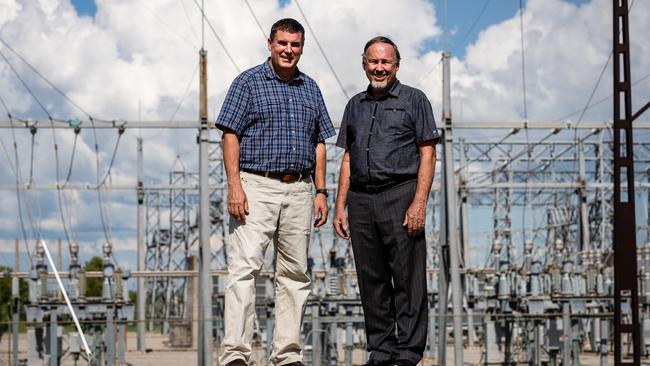Lack of planning for future renewable power spells danger of city blackouts, experts warn
The Northern Territory faces an immediate and growing risk of costly electricity blackouts.

Households and businesses in the Northern Territory face an immediate and growing risk of costly electricity blackouts because governments and regulators have failed to adequately prepare for the growth of renewable energy, industry experts say.
The Territory Labor administration’s hand-picked solar tsar, Alan Langworthy, has joined the recently departed head of the region’s leading fossil fuel generator, Tim Duignan, to blow the whistle on a range of problems.
Mr Duignan was sacked late last year over a system-wide blackout in Alice Springs that an official report linked to a single cloud.
Mr Langworthy chose to speak out to offset the risk that solar power would be blamed for any similar incident in Darwin.
In 2016, he stood next to Chief Minister Michael Gunner announcing Labor’s election pledge of 50 per cent renewable energy by 2030.
The following year he spearheaded the government’s Roadmap to Renewables report meant to plot how to achieve the target.
Mr Langworthy told The Australian that from a negligible base, rooftop solar installations had grown to constitute the largest generator in the Darwin and Katherine network. Several big grid-scale solar projects were also due to come online later this year.
“There’s a risk that the network is not ready for the disturbances that might occur,” he said. “There could be a system black.”
A system black is when an entire electricity network goes offline and has to be restarted piece by piece from scratch. Mr Langworthy voiced frustration that the necessary changes to prepare the network for renewables had not been made. “There’s no real excuse because this has been done elsewhere,” he said.
Mr Duignan, who led Territory Generation until December, said the greatest threats to the NT’s fragile and “islanded” electricity grids came in the wet season when afternoon storms passed over as people were relying on their airconditioners.
The first blast of cold air would cut demand on gas turbines to what could be a critically low level. Then large clouds would extinguish solar generation almost instantaneously, prompting a massive demand spike faster than extra turbines could be brought online.
“They’ve got to anticipate storms coming over and bring machines online. If those machines are not required, then they’re still burning fuel and adding to maintenance costs,” Mr Duignan said.
“In the worst case, there’s potential for a system black. I think it’s inevitable sooner or later.” The added volatility had forced Territory Generation, which is publicly owned, to maintain more costly redundant capacity at the same time as its revenue was declining due to growth in solar generation behind the meter. “It’s almost a perfect storm, and the government doesn’t seem to know what to do,” Mr Duignan said.
Renewables, Energy and Essential Services Minister Dale Wakefield said system planning had accounted for the growth in rooftop solar.
“As in other jurisdictions, the Territory’s power systems are evolving as traditional generation is increasingly replaced by renewable generation such as solar,” Ms Wakefield said.
“The government is implementing our plan for 50 per cent renewables by 2030 while maintaining secure, reliable and affordable electricity.”
The Territory’s Utilities Commission last month blamed Labor’s lack of action for forcing it to impose inefficient new rules on solar generators that could discourage investment and raise consumer power bills.




To join the conversation, please log in. Don't have an account? Register
Join the conversation, you are commenting as Logout